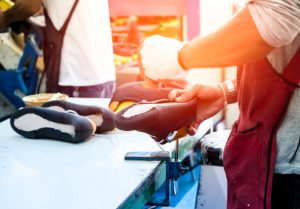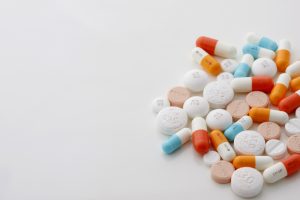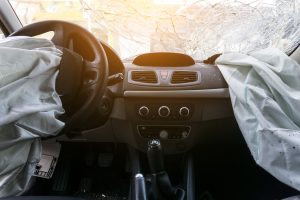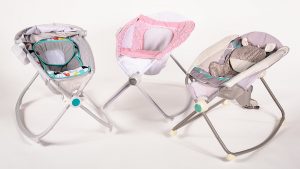Thousands of people are killed and hundreds of thousands more are injured each year by dangerous consumer products, according to the U.S. Consumer Product Safety Commission (CPSC). These deaths and injuries are the result of products that have design or manufacturing defects or lack adequate warnings about their inherent risks.
Although the CPSC monitors reports regarding injuries and fatalities that are potentially related to consumer goods and has the authority to issue recalls of certain products, the sad truth is that recalls are rarely issued until innocent people have suffered harm.
In this post, the product liability lawyers at Carr & Carr Attorneys at Law discuss product categories that are often targeted by recalls and are commonly the subject of product liability lawsuits.
How and Why Products Get Recalled
Consumers rightfully expect that the products they buy are safe when used as directed for their intended purpose. In the United States, product safety is overseen by agencies including the CPSC, which regulates more than 15,000 types of consumer goods; the National Highway Traffic Safety Administration (NHTSA), which provides oversight of on-road motor vehicles; and the Food and Drug Administration (FDA), which regulates consumable goods as well as medications and medical devices.

If a product is found to be unsafe for consumer use after it has reached the market, the appropriate agency may work with the product manufacturer to stop sales of the product and initiate a recall.
Each of these agencies also has the authority to issue recalls independent of manufacturer support.
Most recalls—and most product liability lawsuits—hinge on one of three basic types of product defects:
- Design flaws: Some deficiency in a product’s design makes it unreasonably dangerous
- Manufacturing defects: A fault in the production process contaminates the product or otherwise results in the product being unreasonably dangerous
- Failure to warn: The product’s manufacturer or seller fails to provide adequate instructions for the proper use and/or fails to provide warnings of the product’s potential side-effects or risks
When defective products cause harm, consumers may take legal action to recover compensation for associated medical expenses and other related damages.
However, it’s important to note that a successful product liability claim must prove that the product was defective based on one of the three factors listed above and that the product’s use directly resulted in the injury or illness.
Commonly Recalled Products
Any consumer good can be harmful if used improperly, but there are certain groups of products that are more frequently involved in recalls and product liability lawsuits than others.
Medical Device Recalls
Medical equipment is one of the most recalled consumer product categories.
According to the FDA, more than 19,000 defective medical devices were recalled between 2012 and 2019. Faulty medical devices may be recalled at the manufacturer’s own initiative or at the request of the FDA.
Medical device and prescription drug recalls fall under one of three FDA-established classifications:
- Class I: A dangerous or defective product that could cause serious health problems or death
- Class II: A dangerous or defective product that may cause a temporary health problem, or pose a slight threat of a serious health problem
- Class III: A product that is unlikely to cause an adverse health reaction, but that violates the FDA’s labeling and/or manufacturing regulations
Examples of medical devices that are currently the subject of product liability claims include defective pacemakers and faulty surgical mesh used in hernia repair.
Pharmaceutical Recalls
Nearly 10,000 prescription and over-the-counter drugs were recalled between 2012 and 2019.

As with medical devices, drug recalls may be initiated by the manufacturer or the FDA. Pharmaceutical recalls follow the same classification system as medical device recalls.
Drug recalls are often triggered by the discovery of previously unknown side-effects or adverse reactions with other medications, errors in the manufacturing process, or inadequate warnings of the medication’s risks.
Motor Vehicles and Vehicle Parts
Defective vehicles and faulty vehicle parts jeopardize the safety of the operator and occupants of the vehicle in question, as well as the safety of others on the road.
More than 1,000 recalls related to motor vehicles and vehicle parts were issued in 2018, affecting more than 35 million individuals, according to the NHTSA. In many states, both vehicle manufacturers and dealerships are required to notify vehicle owners about recalls. But vehicle owners don’t always receive these notices, and recalls are often not issued until the defects have contributed to injuries or deaths.

Recalls may relate to design flaws that make a vehicle unreasonably dangerous (such as features that make a vehicle model prone to rollovers) or individual systems or parts (such as faulty steering systems, airbags, brakes or tires).
Appliances and Furnishings
In its 2017 annual report, the CPSC reported more than 3.5 million injuries in a one-year span associated with potentially defective household appliances and furnishings.
Many of these injury victims were children. The CPSC estimates that between 2008 and 2010, more than 22,000 children under age 9 were hurt by furniture or appliances that tipped over and crushed them.
Often, these incidents occur because the product in question was defectively designed or a flaw in the manufacturing process made it unreasonably dangerous. The most commonly recalled household appliances and furnishings, according to the CPSC, include: ranges/ovens, refrigerators/freezers, clothes washers and dryers, air conditioners, heaters/space heaters, countertop appliances, shelving units, and dressers/cabinets.
Children’s Goods
From clothing to toys, hundreds of thousands of children’s products are recalled each year, according to the CPSC.

Among the most commonly recalled children’s goods are strollers, car seats, cribs and playpens, high chairs, ride-on toys, and clothing that doesn’t meet standards for fire-resistance and/or chemical treatment. Recently, two popular models of infant sleepers were recalled after being linked to the deaths of more than 30 babies.
CPSC data indicates that more than 70 children were killed and nearly 100,000 children were injured by nursery equipment, toys and other kid-geared products in 2017 alone.
Other Commonly Recalled Products
Dangerous products aren’t limited to the categories detailed above. Each year, a wide variety of food products, housewares, sports and recreational equipment, and lawn and garden goods are recalled due to health and safety risks.
Produce, meats and other foods are often recalled due to contamination in the production or packaging process, or because they contain pathogens such as E. coli or salmonella. Some common household products like cleaners and weed killers have been recalled or become the focus of lawsuits because they were later linked to severe health problems.
Defective Product Lawsuits in Oklahoma
If you were harmed or a loved one was killed by a defective product, you may be eligible to seek compensation for medical expenses, lost wages, pain and suffering, and other damages through a lawsuit. Cases involving defective consumer goods are sometimes referred to as “product liability” claims, and they may be a single lawsuit or a class action that involves multiple individuals.
A successful product liability claim must establish four key elements:
- You were injured and/or suffered losses
- You were using the product for its intended purpose and according to directions
- The product is defective based on a design flaw, manufacturing defect, or failure to warn of potential side-effects or hazards
- The defect caused your injury or illness
If you believe a defective product caused your injury or illness, or resulted in the death of a loved one, the Oklahoma injury attorneys at Carr & Carr are ready to listen to your story. Please call us today at 866-510-0580 to arrange your consultation or contact us online to get started now.
We offer free initial consultations to help you understand your options, and we don’t charge for our services unless we recover compensation on your behalf. Carr & Carr has offices in Tulsa and Oklahoma City, but we work with victims of defective products from across the country.





